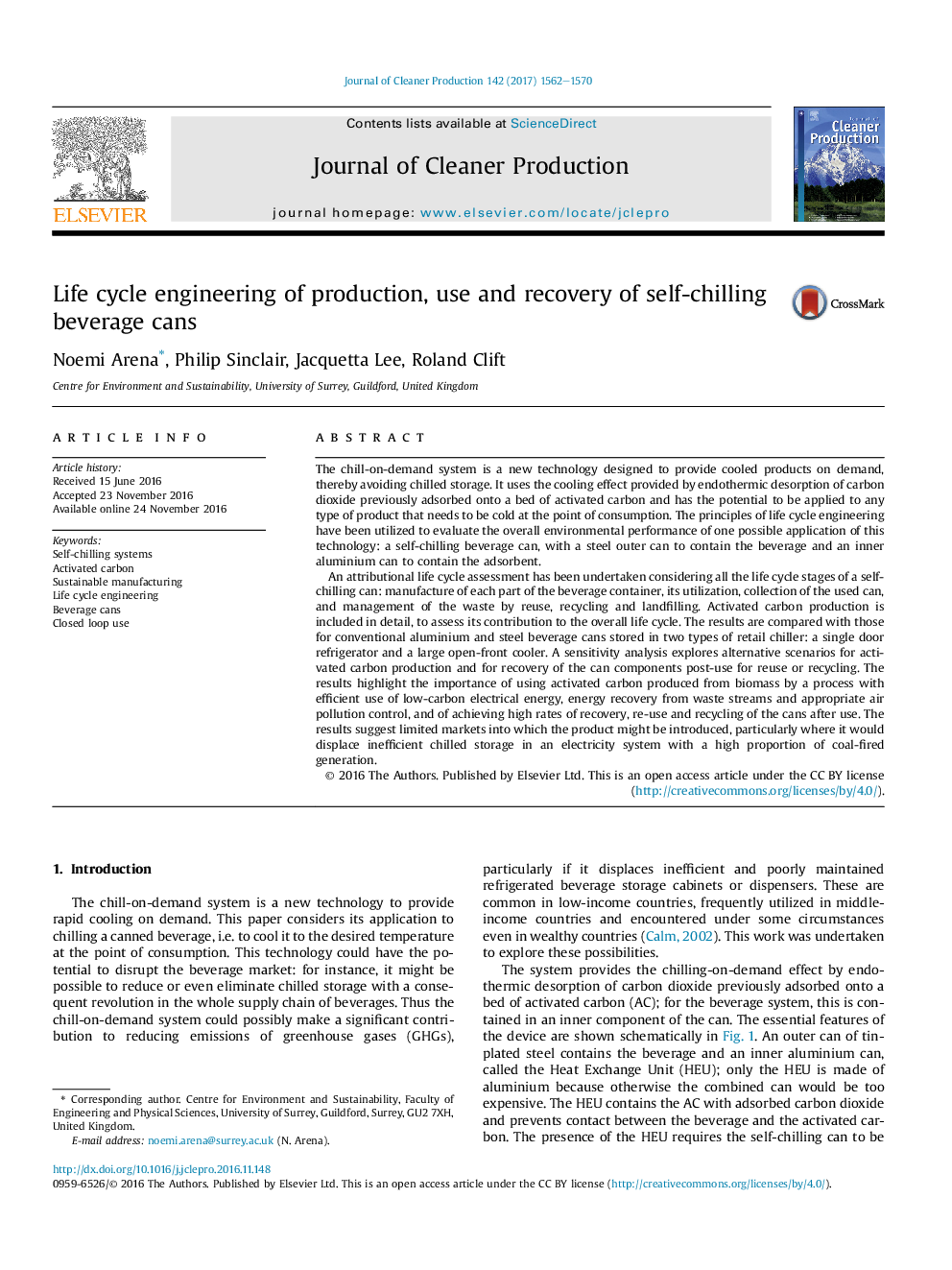| Article ID | Journal | Published Year | Pages | File Type |
|---|---|---|---|---|
| 5480333 | Journal of Cleaner Production | 2017 | 9 Pages |
Abstract
An attributional life cycle assessment has been undertaken considering all the life cycle stages of a self-chilling can: manufacture of each part of the beverage container, its utilization, collection of the used can, and management of the waste by reuse, recycling and landfilling. Activated carbon production is included in detail, to assess its contribution to the overall life cycle. The results are compared with those for conventional aluminium and steel beverage cans stored in two types of retail chiller: a single door refrigerator and a large open-front cooler. A sensitivity analysis explores alternative scenarios for activated carbon production and for recovery of the can components post-use for reuse or recycling. The results highlight the importance of using activated carbon produced from biomass by a process with efficient use of low-carbon electrical energy, energy recovery from waste streams and appropriate air pollution control, and of achieving high rates of recovery, re-use and recycling of the cans after use. The results suggest limited markets into which the product might be introduced, particularly where it would displace inefficient chilled storage in an electricity system with a high proportion of coal-fired generation.
Related Topics
Physical Sciences and Engineering
Energy
Renewable Energy, Sustainability and the Environment
Authors
Noemi Arena, Philip Sinclair, Jacquetta Lee, Roland Clift,
